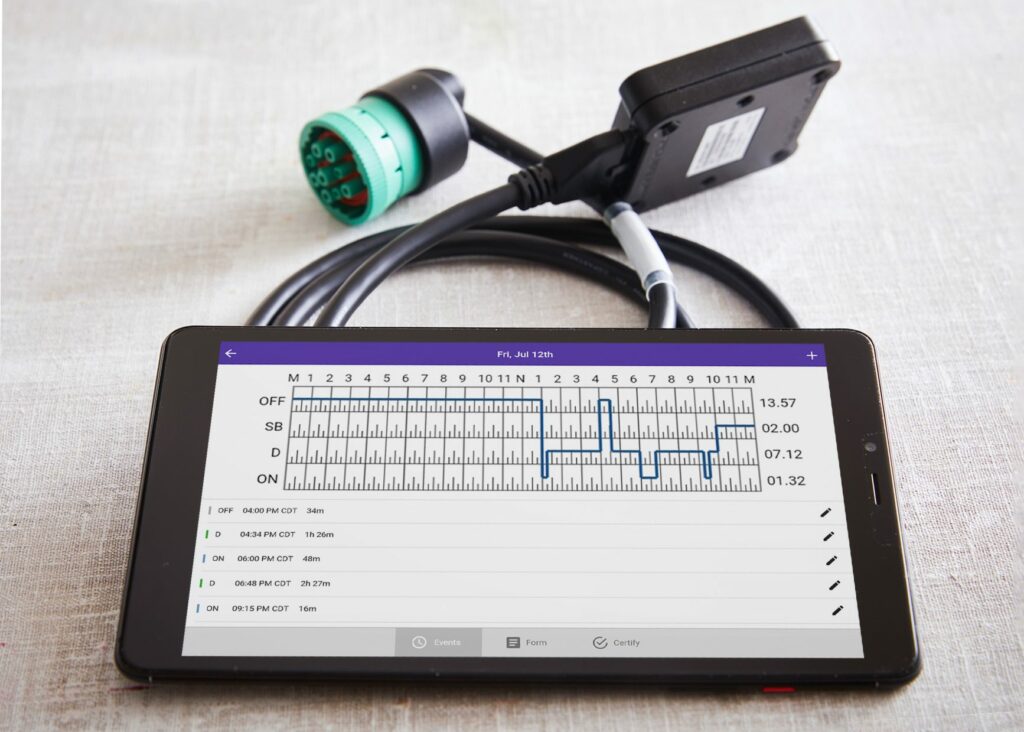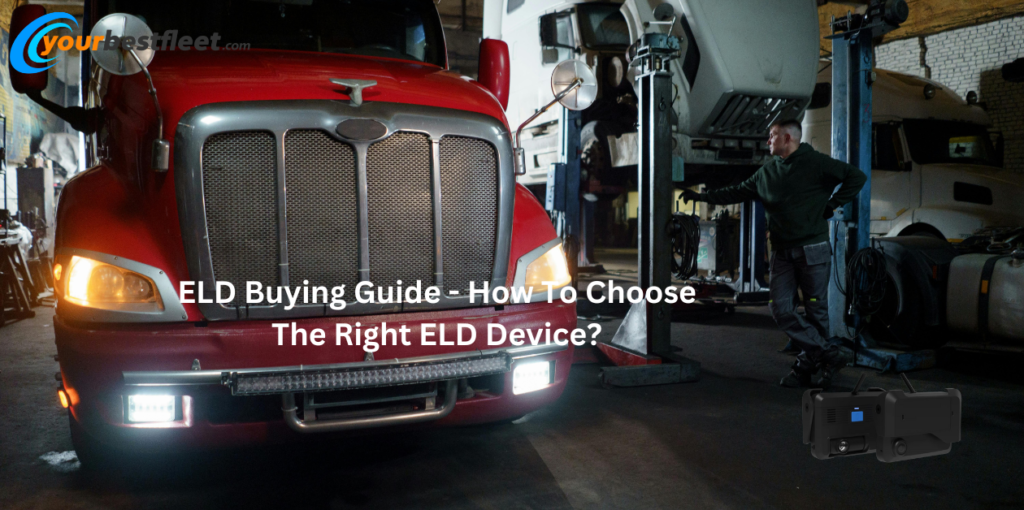Key Takeaways
ELD devices track driving hours automatically and ensure compliance with FMCSA regulations.
Key features like GPS tracking, automated logs, and driver monitoring improve efficiency and safety.
Investing in the right ELD device improves operations, reduces paperwork, and enhances fleet management.
An Electronic Logging Device (ELD) helps commercial drivers track their working hours automatically. Choosing the right ELD device can be confusing because there are many options. A good ELD should record driving hours correctly, work well with dash cameras, and follow FMCSA rules. It should be easy to install, give real-time updates, and store data safely. If your truck does not have a proper ELD, you may face fines. This guide will help you find the best ELD for your needs.
What Is an ELD Device
An ELD device is an Electronic Logging Device that records a driver’s working hours automatically. It connects to a vehicle’s engine to track driving time, rest breaks, and duty status. The FMCSA requires commercial drivers to use an ELD device to follow Hours of Service (HOS) rules.
It replaces paper logbooks with digital records. The ELD device ensures accurate tracking of driving time. It also helps fleet managers monitor compliance easily.

Why Do You Need An ELD Device
Records Driving Hours Accurately
Records driving hours accurately by automatically tracking work time, rest breaks, and duty status. Manual log errors can lead to violations, but an ELD device ensures precise tracking. Accurate logs help drivers stay compliant during inspections and audits.
Prevents Driver Fatigue
Prevents driver fatigue by enforcing mandatory rest breaks and tracking working hours. Overworked drivers are at risk of accidents, but an ELD device ensures they take required breaks. This improves road safety and reduces the chances of fatigue-related crashes.
Ensures Legal Compliance
Ensures legal compliance with FMCSA regulations by digitally tracking Hours of Service (HOS). Without an ELD device, drivers may face fines and service restrictions. Meeting legal requirements keeps fleet operations running smoothly.
Reduces Paperwork and Saves Time
Reduces paperwork and saves time by replacing manual logbooks with automatic digital records. Drivers no longer need to track hours manually, reducing errors. Fleet managers can access real-time logs instantly, improving efficiency.
Improves Fleet Monitoring
Improves fleet monitoring by tracking vehicle location, fuel usage, and driver behavior. Fleet managers can optimize routes and reduce fuel costs. Better monitoring leads to more efficient and profitable operations.
How To Choose The Right ELD Device?

Check FMCSA Approval
Check FMCSA Approval to ensure the ELD device meets federal regulations. The FMCSA provides a list of approved devices that you can verify. Using a non-approved ELD device can result in fines and compliance issues.
Look for Essential Features
Look for Essential Features such as GPS tracking, automatic HOS recording, and compliance reporting. Some ELD devices also offer fuel tracking and vehicle diagnostics. Choosing the right ELD device helps improve efficiency and compliance.
Consider Ease of Use
Consider Ease of Use to ensure the ELD device has a simple and user-friendly interface. A complicated system can lead to errors and frustration for drivers. A well-designed ELD device saves time and makes logging easier.
Check Customer Support
Check Customer Support to ensure quick assistance for technical issues with the ELD device. A provider with 24/7 support through phone, email, or chat is essential. Reliable customer service ensures smooth operation of the ELD device.
Compare Costs and Contracts
Compare Costs and Contracts to understand the total expense of an ELD device, including hardware, software, and monthly fees. Some providers charge extra for installation and maintenance. Choosing the right ELD device requires reviewing pricing and contract terms carefully.
Also Read :- Electronic Logging Devices – The Complete Guide For 2025
Features And Benefits To Consider When Selecting The Top ELD

A top ELD device must be FMCSA-approved to follow legal rules and avoid fines. A simple interface helps drivers use it without confusion. GPS tracking shows real-time vehicle locations for better route planning. Automatic driver logs remove the need for paper records.
Driver monitoring tracks speeding and idle time to improve safety. Software integration connects the ELD device with fleet management tools. Strong customer support ensures quick help when needed.
Conclusion
Choosing the right ELD device is essential for staying compliant, improving efficiency, and ensuring road safety. A FMCSA-approved ELD device records driving hours accurately, prevents driver fatigue, and reduces paperwork. Features like GPS tracking, driver monitoring, and software integration help fleet managers optimize operations.
Checking customer support, ease of use, and total costs ensures a hassle-free experience. Investing in the right ELD device keeps your fleet running smoothly while avoiding penalties and legal issues.
James Johnson is a former truck driver who now works as a writer, specializing in the trucking industry. With over 15 years of experience on the road, James has a unique perspective on the challenges and opportunities faced by truck drivers and the trucking industry as a whole. His writing focuses on issues such as safety, regulation, and the latest industry trends. His work has been featured in several trucking publications and he has received recognition for his contributions to the industry. In his free time, James still enjoys being around trucks and often attends truck shows and other industry events.


